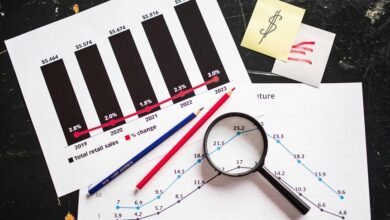5034614677 High-Yield Dividend Stocks You Should Know

High-yield dividend stocks present a compelling opportunity for investors aiming to generate reliable income streams, yet their appeal depends heavily on sector stability and financial health. While sectors like utilities and real estate often provide consistent payouts, they also carry specific risks that could impact dividend sustainability. A thorough, analytical approach to evaluating payout ratios, earnings stability, and sector dynamics is essential for constructing a resilient portfolio. Understanding these nuances can significantly influence long-term income prospects.
Maximizing Income Through Diversified High-Yield Stocks
High-yield dividend stocks represent a category of equities that offer above-average dividend payouts relative to their share prices, making them attractive to income-focused investors. These stocks appeal to individuals seeking financial independence, as consistent income streams can supplement or replace traditional earnings.
A critical factor in evaluating these investments is dividend sustainability—an assessment of whether the company’s cash flows can support ongoing dividend payments without compromising operational stability. Analyzing financial health, payout ratios, and earnings stability provides insight into the longevity of dividend distributions, ensuring investors avoid stocks with unsustainable yields that risk abrupt cuts.
Sector diversification plays a vital role in managing risk within high-yield portfolios. By spreading investments across various industries—such as utilities, telecommunications, real estate, and energy—investors reduce exposure to sector-specific downturns that can threaten dividend reliability.
For instance, utility companies often exhibit stable cash flows, supporting consistent dividends, while energy firms may offer higher yields but with greater volatility. A well-diversified approach balances these differences, enhancing the resilience of income streams over market cycles.
Furthermore, understanding sector-specific dynamics and their impact on dividend sustainability allows investors to align their portfolio with broader economic trends. For example, sectors with predictable demand and regulated revenue structures tend to sustain dividends more reliably.
Combining sector diversification with rigorous analysis of dividend sustainability creates a strategic framework that maximizes income while minimizing risk. This disciplined approach ensures investors retain the flexibility to pursue financial freedom, leveraging high-yield stocks as part of a resilient, long-term income generation plan.
Conclusion
In conclusion, assembling a portfolio of high-yield dividend stocks is akin to navigating a minefield with a compass—requiring meticulous sector analysis, financial scrutiny, and strategic diversification. While the promise of steady income dazzles, investors must remain vigilant against hidden risks lurking within seemingly stable sectors. Ultimately, the prudent approach balances enticing yields with rigorous due diligence, transforming a speculative gamble into a disciplined pursuit of financial independence—because nothing says “safe investing” like a well-vetted dividend stock.




